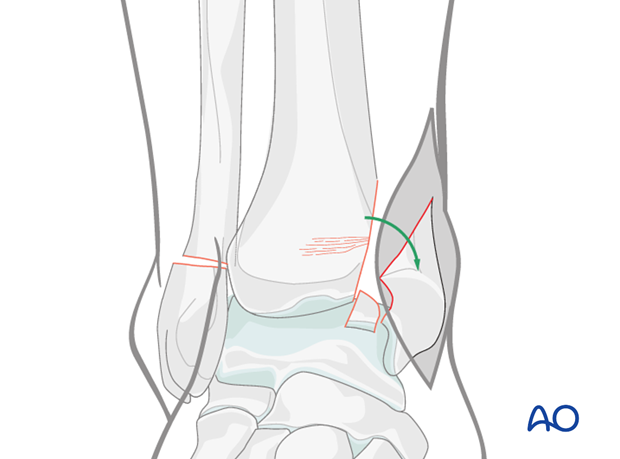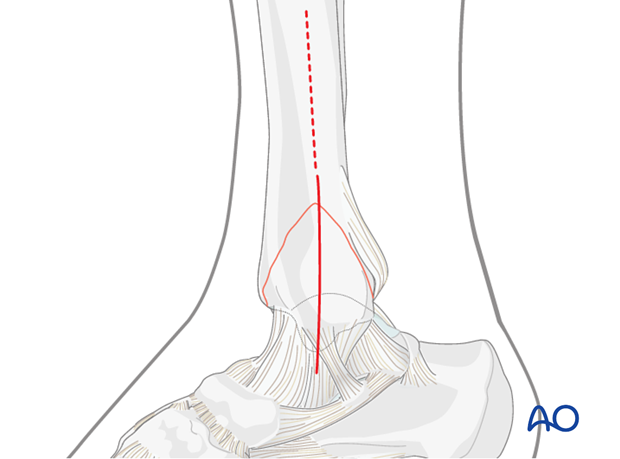Medial approach to the distal tibia
1. Introduction
Resolution of the surgical swelling prior to definitive fixation of the tibial articular surface is necessary.
A direct medial approach can be used for vertical medial split depression fractures with associated articular impaction. However, the risk of leaving the plate directly under the medial incision should be considered. Alternatively, the incision can be anteromedial. These fractures frequently have impaction and comminution where the fracture enters the joint. Frequently there is an independent osteochondral fragment. Additionally, there can be impaction of the adjacent tibial plafond that must be elevated to obtain an anatomical reduction.

2. Incision
The incision must extend proximally enough to allow displacement of the fractured fragment and entry into the ankle joint, as well as reducing the fragment.
Depending on the condition of the soft tissues, the incision can be extended proximally to allow for a direct plate application to the medial tibia (attention to saphenous vein and nerve). Alternatively, the incision can be limited to the necessary exposure for an accurate articular reconstruction followed by a minimally invasive plating technique of the medial tibia proximal to the fracture exit.













